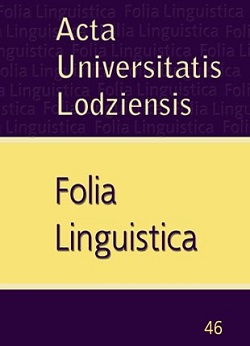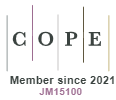Kontaminacje jedno- i wielowęzłowe w nagłówkach prasowych i komunikatach reklamowych
DOI:
https://doi.org/10.18778/0208-6077.46.03Abstrakt
In recent years, portmanteau words have become very popular linguistic phenomena in press headlines and advertising slogans. This research focuses on wordplay in headlines from daily newspapers, weekly and monthly magazines and advertising texts. The author discusses which words can blend and tries to answer the question what functions portmanteau words perform in contemporary media texts. The main aim of this article is an analysis of portmanteau words which occur in initial (e.g. mękamatyka combines the word męka with the word matematyka), middle (e.g. Billary combines the name Bill with the name Hillary) and final sounds (e.g. WIELKAMOC combines the word Wielkanoc with the word moc) of words. Portmanteau words can have one (e.g. fordyfikacja, tambylec, Motylia) or more common parts (eurogadament, wyLOTynki, archeostrady).
Portmanteau words play an important role in media texts nowadays. The basic purpose of using them in headlines and advertising slogans is to encourage/persuade recipients to read an article or buy an advertised product. Sometimes portmanteau words are used to call new products or phenomena. Very often portmanteau words are sources of humour, which allows building close relations between the sender and the receiver. These neologisms help to attract the recipient’s attention and express the author’s emotional attitude to the entities described. They can communicate to readers or customers the possibility of double reading of headlines and slogans, expand or restrict information, and convey positive or negative meanings. They are often used to bond with the receiver. Furthermore, using portmanteau words testify to “economy trends” in a language.
Pobrania
Bibliografia
Cienkowski W., Zagadnienia definicji, analizy i klasyfikacji kontaminacji leksykalnych, [w:] Z polskich studiów slawistycznych. Seria 5. Językoznawstwo. Prace na VII Międzynarodowy Kongres Slawistów w Zagrzebiu 1978, Warszawa 1978, s. 351–356.
Google Scholar
Dabert D., Czytelnik uwiedziony. Forma językowa tytułów „Gazety Wyborczej”, „Odra” 1999, nr 3, s. 17–24.
Google Scholar
Florczak J., Zasady funkcjonowania chwytów typograficznych w tekstach o charakterze perswazyjnym, „Biuletyn Polskiego Towarzystwa Językoznawczego” 2004, z. LX, s. 71–88.
Google Scholar
Gajda S., Społeczna determinacja nazw własnych, „Socjolingwistyka” 1987, t. 6, s. 79–89.
Google Scholar
Grabias S., Kontaminacje we współczesnym języku polskim. Próba charakterystyki, „Annales UMCS. Sectio F” 1970, t. 25, nr 6, s. 117–145.
Google Scholar
Kudra B., Kreatywność leksykalna w dyskursie politycznym polskiej prasy lat osiemdziesiątych i dziewięćdziesiątych, Łódź 2001.
Google Scholar
Majkowska G., Klasyfikacja semantyczna zamierzonych modyfikacji związków frazeologicznych, „Z problemów frazeologii polskiej i słowiańskiej” V, red. M. Basaj, D. Rytel, Wrocław 1988, s. 143–163.
Google Scholar
Majkowska G., Zajawki, potocyzmy, wtórne nominacje, „Regiony” 1996, s. 109–117.
Google Scholar
Nagórko A., Kontaminacje leksykalne — słowotwórstwo czy radosna tfurczość?, s. 203–211.
Google Scholar
Ochmann D., Prasowe kontaminacje leksykalne (Analiza strukturalna), „Język Polski” 1997, z. 2–3, s. 131–144.
Google Scholar
Zagórski Z., Jeszcze w sprawie kontaminacji, „Studia Polonistyczne UAM” 1985, s. 69–83.
Google Scholar
Zagórski Z., Kontaminacja a zjawiska pokrewne, „Slavia Occidentalis” 1988, t. 45, Warszawa–Poznań 1989, s. 91–98.
Google Scholar
Zagórski Z., W sprawie kontaminacji, „Studia Polonistyczne UAM” 1973, s. 133–143.
Google Scholar
Pobrania
Opublikowane
Jak cytować
Numer
Dział
Licencja

Utwór dostępny jest na licencji Creative Commons Uznanie autorstwa – Użycie niekomercyjne – Bez utworów zależnych 4.0 Międzynarodowe.










